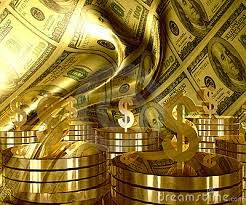By Mr. Prithviraj Kothari, MD, RSBL
Holiday fever, kept the markets calm with very little
volatility in gold prices.
After the Federal Reserve’s
interest-rate rise last week, trading remains cautious while investors assess
conditions in a non-zero bound environment for the first time in seven years.
Gold prices ended the U.S. day session and a
holiday-shortened trading week modestly higher Thursday. Some short covering in
the futures market and perceived bargain-basement buying in the cash market
heading into a long weekend gave gold its lift.
There were no major international news developments Thursday
and the marketplace worldwide was very subdued ahead of the Christmas holiday
on Friday.
Spot gold was last at
$1,073.60/1,073.90 per ounce, a $2 increase on Wednesday’s close. The yellow
metal has climbed away from five-year lows from the start of the month of just
$1,046.40.
The gold price was higher on
Thursday morning, tracking the recovery in the oil price and a slight decline
in the dollar, in thin pre-Christmas trading conditions.
Now that
we have rounded up for the week, I would also like to share my view on gold
outlook for 2016.
As we all have seen that after increasing consecutively for
11 years, gold started giving negative returns since 2013. Formerly gold was seen as the highest return
generating asset in its class. But now economies have changed and people have
shifted to other modes of investment like equities and hence gold has lost its
appeal as a safe haven asset.
Will gold bottom further? Has it reached its support level? What’s
in store for gold in 2016?
Well these questions have been constantly rotating
the market since the past fortnight, especially after the fed rate hike.
Everyone in the markets had hopes that the Fed will raise interest
rates for the first time in a decade. The day the Fed increased its rates we
saw ETF gain 18.6 tonnes for the first time in the past three years. Everyone
thought that a rate hike would slosh gold prices but gold managed to stabilize
at 1075$ and did not decline as expected.
Moreover, if we see from the mining aspect, the mining cost
of gold is around 1000 $- 1050 $ and I don’t see gold going below that level. Now
that gold has already witnessed this bottom. I think this year gold might
appreciate around 7-8 per cent compared to last year.
Moving on to the Indian markets. As far as the Indian markets
are concerned, the INR is gradually appreciating which is in turn affecting
gold prices. If you see the international market. Gold may bottom at 1000/1050
dollar and may witness an upswing towards 1200-1300 dollars. But at the same
time the rupee appreciating will bring gold in the range of Rs. 24,000- Rs.30,
000 in 2016.
The population of India is 125 crore. Every year 800-900 tonnes
gold is imported whether the price is $1900 or $700. A matter of concern is the
custom duty that is currently 10 percent. Due to this, there is a huge difference
between off shore and domestic markets. This duty increases gold prices by Rs.2,
50,000 per kilo.
Due to high duty the quantity of gold smuggled into the
country is also rising. Last year around
200 tonnes of gold was smuggled. And this year the figure might touch and 300 tonnes
thus bringing the official import figures down to 500-600 tonnes.
The government has been trying its best to get some viable
and profitable schemes into the market like the gold monetization scheme and
gold sovereign bonds. Gold sovereign bonds are not a viable option as prices
are fixed at Rs.26840 and currently the prices are almost 5per cent down.
Gold monetization is a scheme where the temples are more
willing to deposit gold in banks. This scheme may take time for proper implementation
but once it pick up we are really positive that the idle gold lying in the
temples and Indian household) almost 500-1000 tonnes) will be flushed into the market
and this would really help the economy.
To conclude I would say that 2015 was a year with nervous
sentiments. But 2016 could be the golden year literally especially the jewelers
and the investors.
The primary purpose of this blog by
Prithviraj Kothari - MD, RSBL, is to educate the masses of the current happenings
in the Bullion world.
"Markets Remain Calm For Gold: RSBL"
http://riddisiddhibullionsltd.blogspot.in/2015/12/markets-remain-calm-for-gold-rsbl.html




